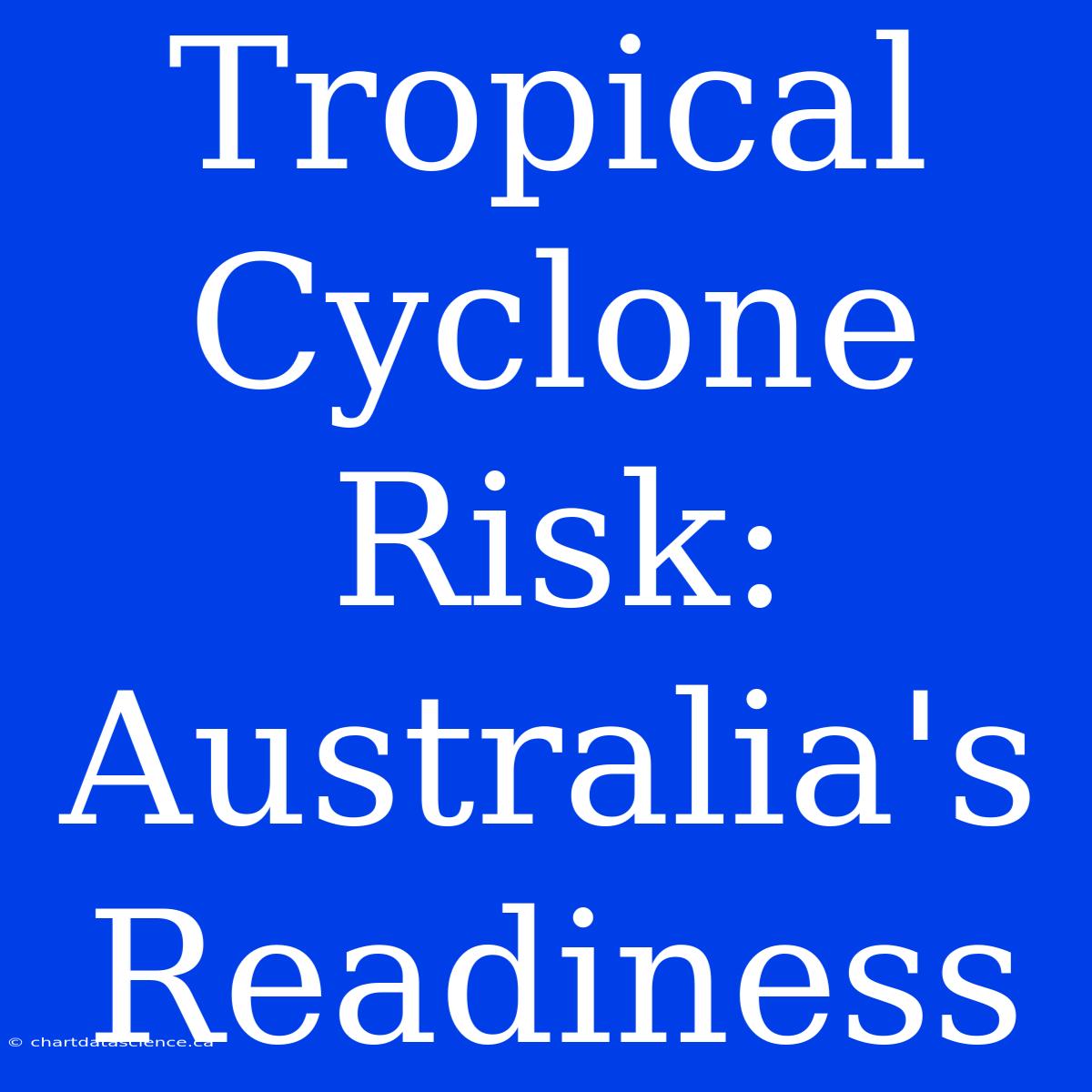Tropical Cyclone Risk: Is Australia Ready for the Next Big One?
Australia, a land of diverse landscapes, also faces the wrath of nature's fury in the form of tropical cyclones. These powerful storms, fueled by warm ocean waters, can bring devastating winds, torrential rain, and dangerous storm surges, leaving a trail of destruction in their wake.
The Threat of Tropical Cyclones in Australia
The cyclone season in Australia runs from November to April, primarily impacting the northern regions. States like Western Australia, Northern Territory, Queensland, and even parts of New South Wales experience the brunt of these storms.
Australia's Preparedness: A Mixed Bag
While Australia has invested heavily in cyclone preparedness, there are still areas that need attention. Here's a look at the country's readiness:
- Early Warning Systems: Australia boasts a sophisticated network of weather monitoring and forecasting systems, providing early warnings to communities in the path of cyclones.
- Infrastructure: Cyclone-resistant infrastructure, such as strong buildings and flood-proof barriers, is crucial for mitigating damage. While progress has been made, continuous upgrades are vital.
- Emergency Response: Australia has a strong emergency response network, with dedicated agencies and volunteers ready to assist during a cyclone. However, coordination and resource allocation can be challenging in remote areas.
- Public Awareness: Raising public awareness about cyclone risks and safety measures is vital. Initiatives like community meetings and public service announcements are crucial for educating the population.
The Need for Continuous Improvement
While Australia has made strides in cyclone preparedness, there's always room for improvement. Some key areas for focus include:
- Climate Change Adaptation: With climate change intensifying extreme weather events, Australia must invest in climate-resilient infrastructure and adaptation strategies.
- Early Warning Dissemination: Reaching vulnerable populations, including remote communities, with timely and effective warnings is paramount.
- Community Resilience: Empowering communities through training and drills to prepare for and respond to cyclones is essential for building resilience.
- Financial Support: A robust financial safety net is needed to assist communities recovering from cyclone damage. This includes readily available financial assistance for rebuilding and restoring livelihoods.
Facing the Future: A Collaborative Approach
Australia's success in mitigating the risks posed by tropical cyclones depends on a collective effort. Government agencies, communities, and individuals must work together to ensure preparedness and minimize the impact of these natural disasters. By investing in research, strengthening infrastructure, and raising awareness, Australia can build a more resilient future in the face of tropical cyclones.

